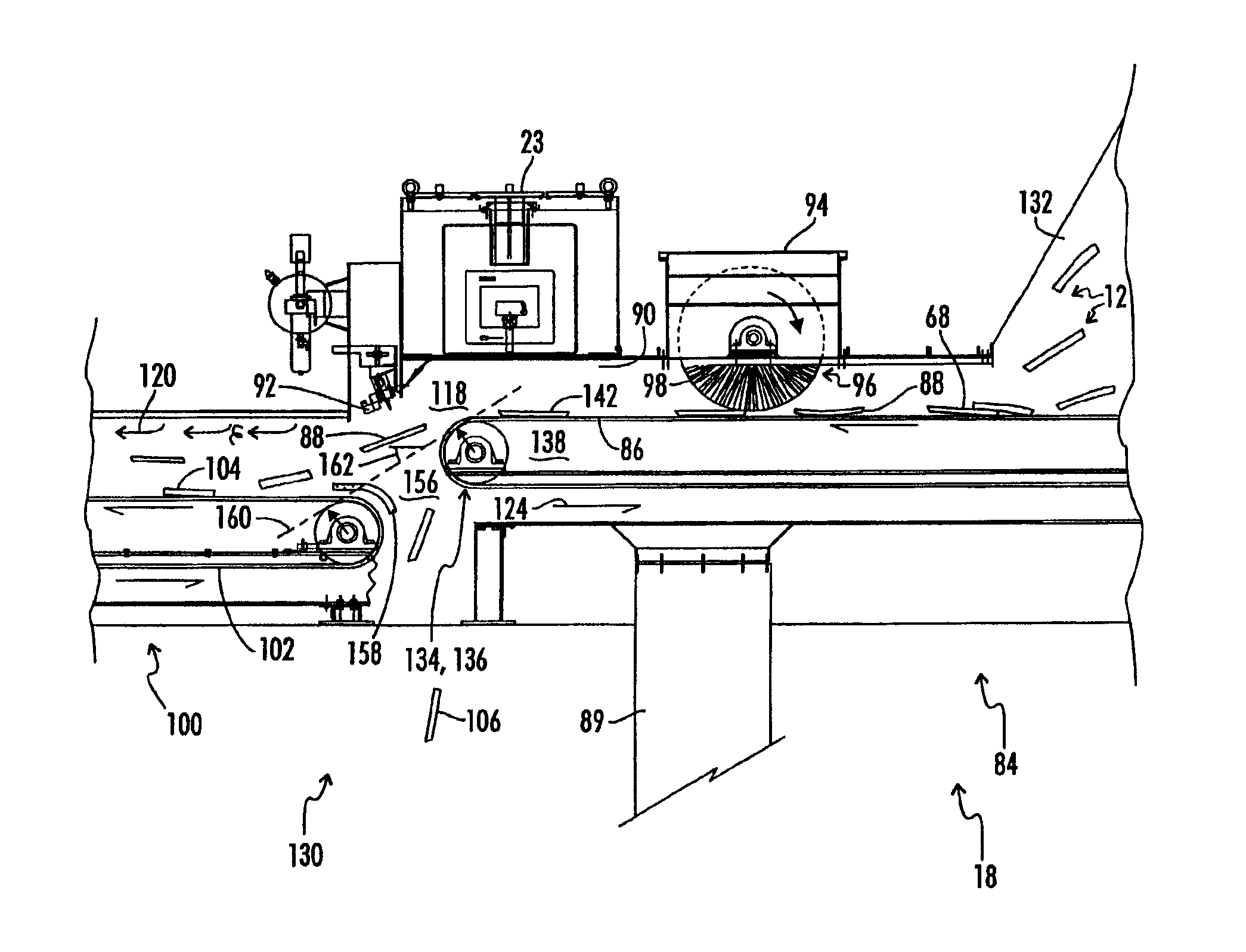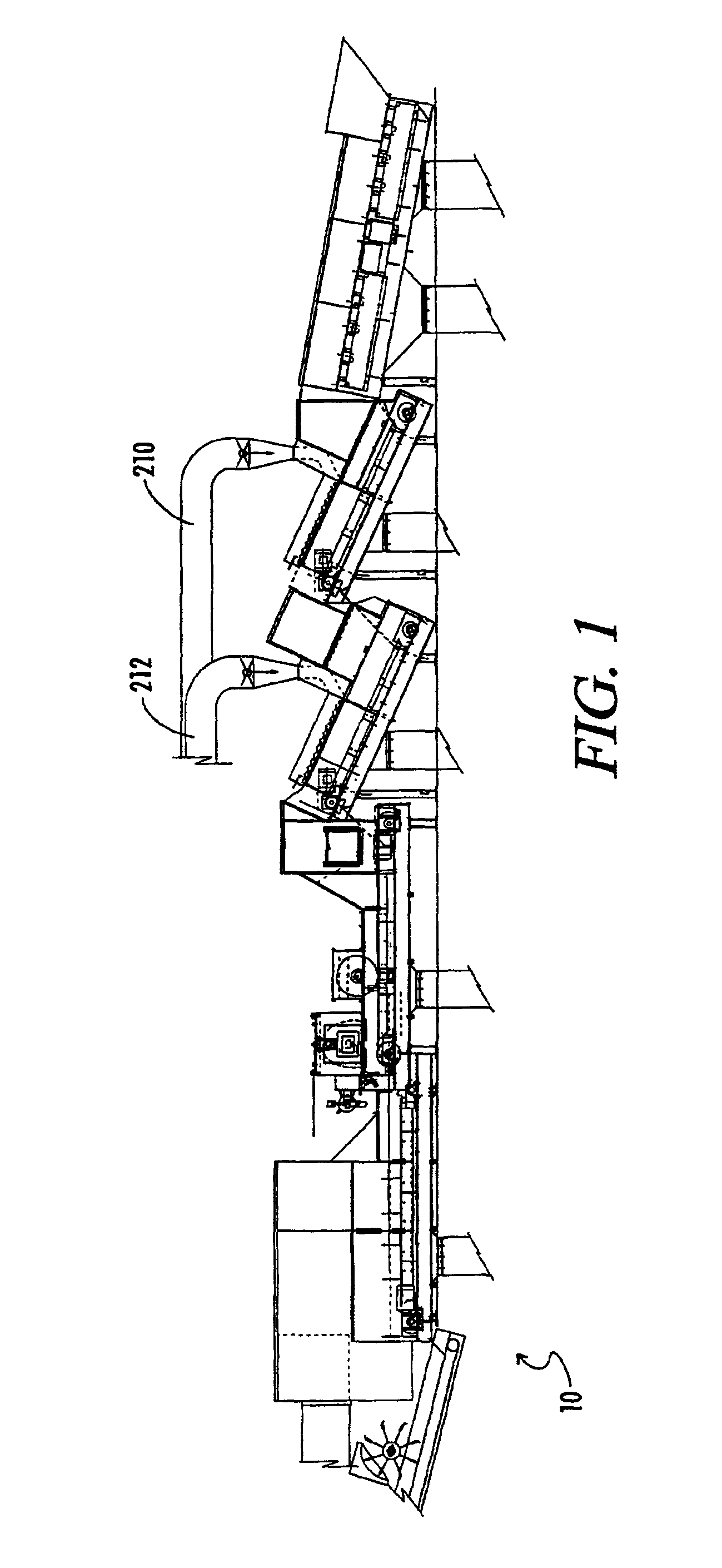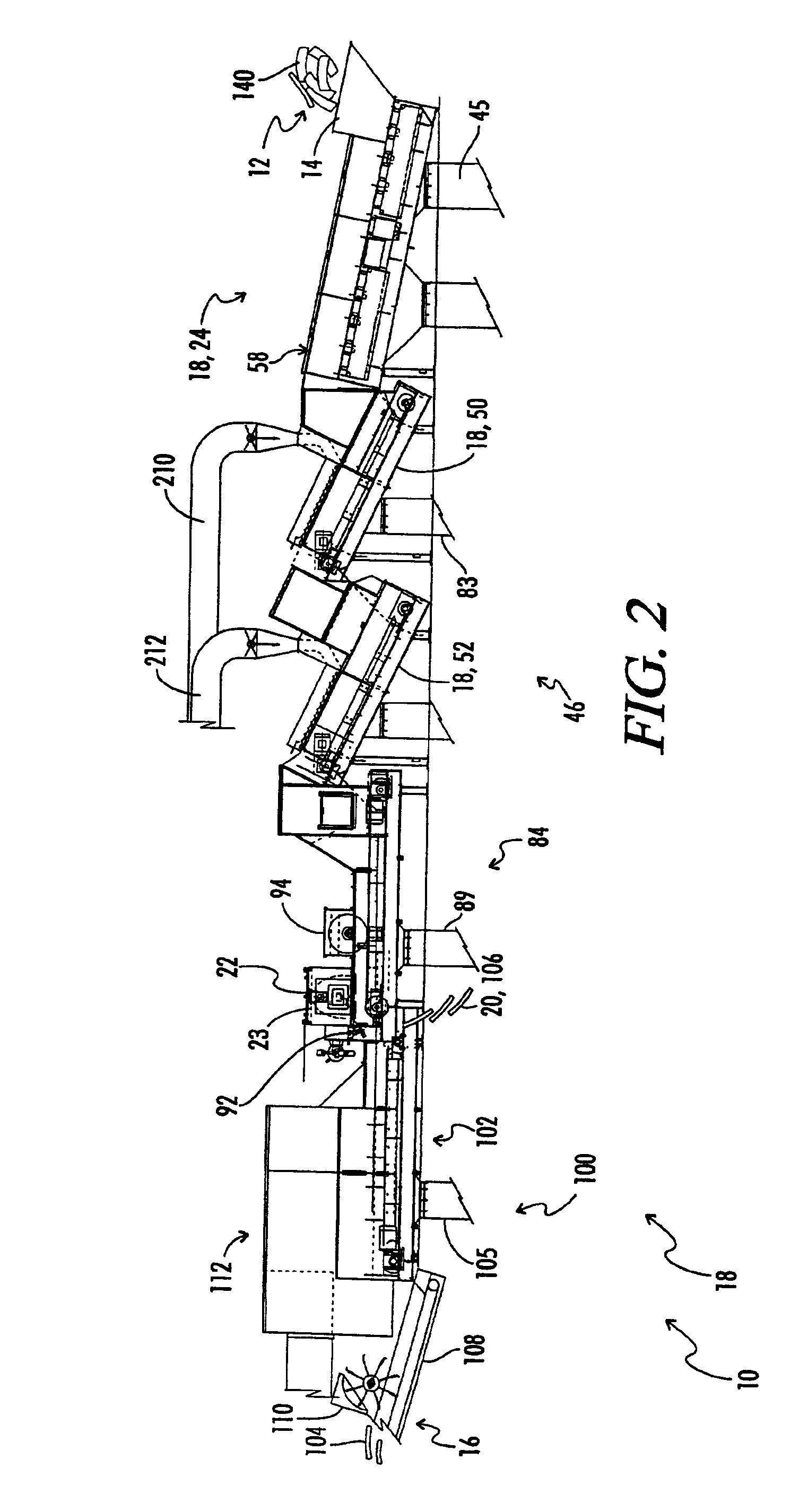Acceleration conveyor
a conveyor and acceleration technology, applied in the field of paper handling, can solve the problems of ineffective paper sorting, time-consuming and expensive, and almost entirely used for wasting paper sorting, and achieve the effects of reducing labor requirements, improving consistency and repeatability, and effective sorting
- Summary
- Abstract
- Description
- Claims
- Application Information
AI Technical Summary
Benefits of technology
Problems solved by technology
Method used
Image
Examples
Embodiment Construction
[0032]The present invention relates to methods and apparatus for handling, in particular sorting, paper. The invention will be best understood by reference to the attached drawings wherein like reference numerals refer to like components.
[0033]FIG. 1 shows an elevated side view of one embodiment of the present invention for a paper handling or sorting system 10. Referring to FIG. 2, the paper handling system 10 is adapted to handle paper 12 fed into the system. The system 10, in the embodiment shown in FIG. 2, comprises a paper input 14 adapted to receive the paper 12, and a product output 16. The system 10 includes acceleration means 18 for distributing and accelerating the paper 12. The acceleration means 18 is operably positioned between the paper input 14 and the product output 16. As is further explained below, the acceleration means 18 includes several separate components including spreader 26, inclined conveyors 50 and 52, and acceleration conveyor 84.
[0034]In some embodiment...
PUM
| Property | Measurement | Unit |
|---|---|---|
| speed | aaaaa | aaaaa |
| transition angle | aaaaa | aaaaa |
| transition angle | aaaaa | aaaaa |
Abstract
Description
Claims
Application Information
 Login to View More
Login to View More - R&D
- Intellectual Property
- Life Sciences
- Materials
- Tech Scout
- Unparalleled Data Quality
- Higher Quality Content
- 60% Fewer Hallucinations
Browse by: Latest US Patents, China's latest patents, Technical Efficacy Thesaurus, Application Domain, Technology Topic, Popular Technical Reports.
© 2025 PatSnap. All rights reserved.Legal|Privacy policy|Modern Slavery Act Transparency Statement|Sitemap|About US| Contact US: help@patsnap.com



